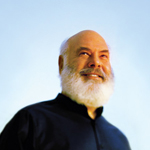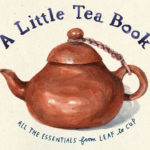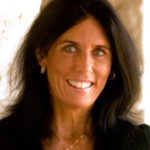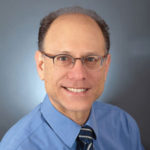An Interview with Martin Rossman, M.D.

You are releasing a new book called The Worry Solution. Why did you choose to focus on worry?
I was thinking, with my skills and knowledge, what can I pass on that will relieve the most suffering? It occurred to me that teaching people to use their brains to solve problems more effectively, and to worry less at the same time, would help a lot of people. Worry can be a useful mental function – it lets you turn a problem over and over in your mind, looking for new angles and new perspectives until you find a solution. It lets you imagine possible futures so you can avoid unnecessary risks and dangers – but it can quickly become a bad mental habit that creates anxiety and stress and degrades your quality of life. Too many people are consumed by or overwhelmed by their worries, and some of it, sometimes most of it, is simply unnecessary and optional. In The Worry Solution, I teach people simple mental skills that help them lose a “bad” worry habit, and make their “good” productive worry more effective. It frees their minds up to be more creative, more relaxed, more effective in life, and even happier.
What interested you in acupuncture, and how do you use it in your practice?
I was seeing mostly people with chronic illnesses and had become frustrated by how little we have to offer people in those situations. One day in 1971, at our medical staff meeting, I viewed a video made by the first American Medical Association (AMA) delegation to China. The video showed a man having a major lung operation. He was sipping tea and talking to his nurses while the surgeon was cutting into his chest and removing the diseased part of the lung. All he had for anesthesia were four acupuncture needles in his legs and arms.
The AMA delegates, all patriarchs of American medicine, said that they had seen 100 such operations and thought the phenomenon deserved “immediate and thorough investigation.” I followed up and spent three months in the first major American study of acupuncture for intractable chronic pain. I saw that acupuncture was helping a large number of people who had not been helped by anything in medicine. I started to study it in earnest and have used it every day in practice since – for pain, anxiety, sleep, immune stimulation, allergy relief, and a host of other ailments. When practiced properly, it’s extremely safe, balances the body, relaxes the mind, and complements almost every other kind of treatment
What are three things people can do to strengthen the mind/body link?
The mind/body link is already strong – it’s matter of learning to use it well, which is what I concentrate on when teaching guided imagery for self-healing. The first thing to learn is a reliable way to relax the body and mind – there are a hundred ways to do this including meditation, hypnosis, biofeedback, qigong, and so on -but they all use breathing and the imagery as their tools. The next skill to learn is how to use your mind, chiefly the imagination, to focus on the healing you want to have happen. The third and most powerful use I have seen of the mind/body link is to be able to become aware of what the mind/body needs if it’s sending the signals we call symptoms. I have found guided imagery most effective for all these purposes and the methods are easily learned from CDs, classes or working with a well-qualified imagery guide.
What do you suggest for a simple, daily relaxation technique?
The easiest way I’ve found for most people to relax is to take three to six deep, full breaths and let tension go on the out breath, then daydream yourself to a place you love to be – a beautiful, peaceful, safe place that feels good to be in. Notice what you imagine seeing, hearing and feeling in that place. Pay attention to details and use all your senses. When your mind wanders, breathe deeply again and bring your attention back to this place, and hang out there for three, five, 10 or 20 minutes. When you come back to the outer world you’ll feel much more relaxed, your mind will be clear, and you’ll feel refreshed. You will also have given your body time to focus all its energy for that time on repair and renewal, without having to tell it what to do. It’s the simplest yet perhaps most widely applicable use of guided imagery.
What kind of results have you seen in your practice from patients who were previously unaware of their own healing powers?
I’ve seen many people with chronic illnesses find pain relief, better sleep, relief from anxiety, and learn to live with much improved health. I’ve seen heart disease being reversed and diabetes and hypertension go into remission with natural treatments. Most of my cancer patients go through treatments with much less discomfort, anxiety, nausea and fatigue than they did when there was no way to get them involved. I’ve seen many people survive diseases that they were told would kill them.
On top of that, I’ve seen hundreds, maybe thousands of people who felt they were helpless victims of illness realize that they can play an active part in their healing, and find a great source of strength and pride when they do. They become aware that they are powerful, even if they are not omnipotent, and it makes a difference in their whole life, not just with their physical health. Healing the body is important, but healing the spirit may be even more important, given that we have to leave our bodies eventually.
How does your approach to medicine, which you call “collaborative,” mesh with conventional care?
Perfectly well, because the collaborative model does not preclude using any approach to medicine or healing, including the conventional. I chose to call my practice “collaborative medicine” to emphasize that when I bring my expertise as a physician and acupuncturist who has studied nutrition, psychology and spirituality, and you bring your own self-knowledge, life experience, and a willingness to learn, we have the best chance of having a good outcome.
Collaborative medicine means we take the time to get to know each other so we can work together toward the best health you can achieve. We may decide to use conventional, alternative or integrative approaches, but the decisions are made in a collaborative way.









